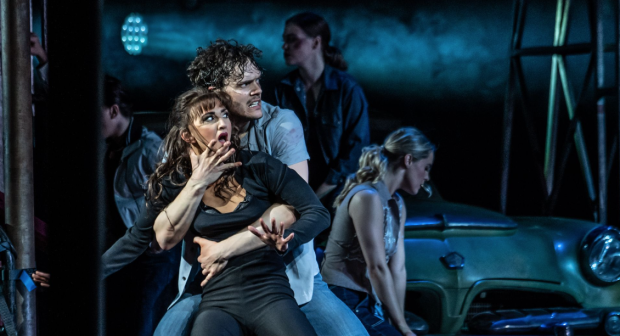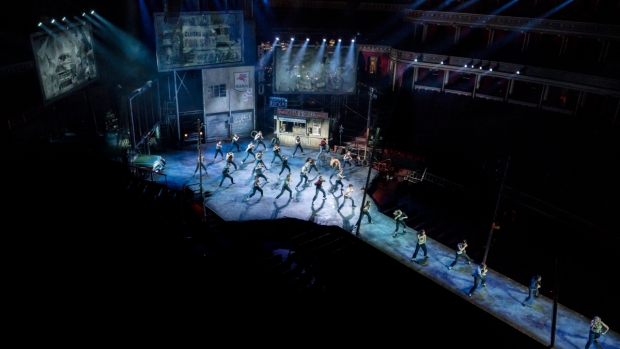Matthew Bourne's The Car Man at the Royal Albert Hall – review

This isn't just a dance production, it's an epic theatrical event.
With a cast of more than thirty and a vast set by Lez Brotherston that transforms the Albert Hall into 1950s small town Texas, Matthew Bourne's exciting piece of dance theatre has had a marvellous upgrade. The plot is actually closer to The Postman Always Rings Twice (sexy young couple kill her bullying older husband in between acts of remarkably athletic mating) than the original Carmen with the added spice of the drifter around whom the story revolves being actively bisexual. A sultry Rebel Without A Cause vibe pervades, and the cinematic feel is further enhanced by the use of giant screens upon which the film star gorgeous leads' faces are projected at key moments.
Rodion Shchedrin's "Carmen Suite", based on the Bizet opera score, adapted by Terry Davies, all seductive rhythms and stabbing pizzicato, sounds more aggressively percussive than usual, but there is also a genuine thrill in the sound of the 20-piece string section surging around this huge auditorium. The heightened passion and drama of the music, under Brett Morris's baton, is a seamless match for the histrionic, enthralling choreography and the scorching heat of the setting.
The four leads are double cast, and at press night Zizi Strallen, on hiatus from Mary Poppins, and Will Bozier performed the leads with a breathtaking ferocity and sexiness. Strallen is as compellingly expressive an actress as she is a dancer, and makes something chilling and memorable of Lana's vengeance on the men who have wronged her.

Bozier invests the drifter Luca with an irresistible loose limbed sensuality and easy charisma, in a performance that recalls the sensational impact of Adam Cooper's legendary lead turn in Bourne's Swan Lake: it is impossible to take your eyes off him.
Equally terrific are Paris Fitzpatrick and Kayla Collymore as a doomed secondary couple whose deeply felt, tragic duet is one of the highlights of the second half. Alan Vincent, who originated the lead role of Luca when The Car Man premiered at the Old Vic in 2000, is a powerful presence as Lana's horrible husband, although his bloody mouthed reappearance in act two provoked some unseemly audience laughter.
The large ensemble execute Bourne's muscular, dynamic choreography with thrilling attack. The precision and sheer athleticism on display is a source of considerable wonder, although it is a slight shame that the long, street lamp-studded walkway that bisects the stalls is not used more: for the brief moments when the cast dance upon it at close quarters to the audience, the excitement and immediacy is palpable.
Chris Davey's lighting is wonderfully moody and Brotherston's design, pitched half way between grimy and glamorous, evokes the period with flair and economy. The storytelling is admirably clear throughout: there is no synopsis in the programme and you don't need one.
This is one of the theatrical highlights of the London summer. If you've already seen The Car Man, it's worth going again to catch it on this scale. An intoxicating piece of theatre.










